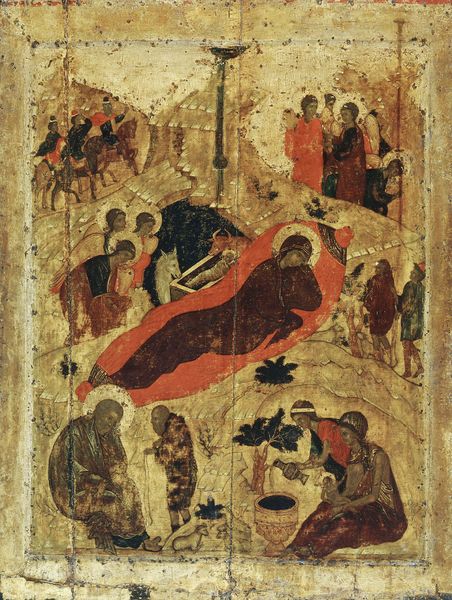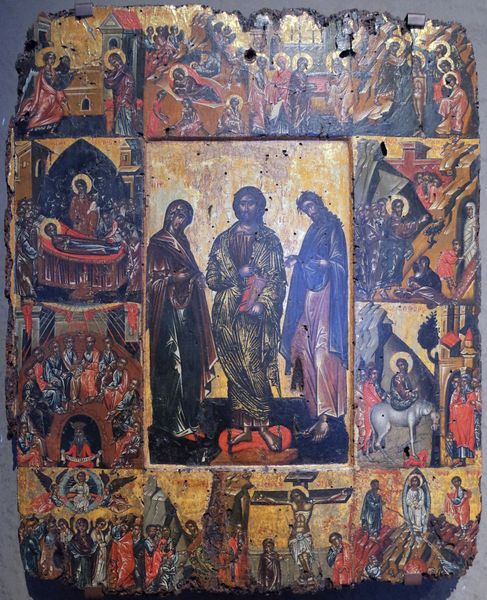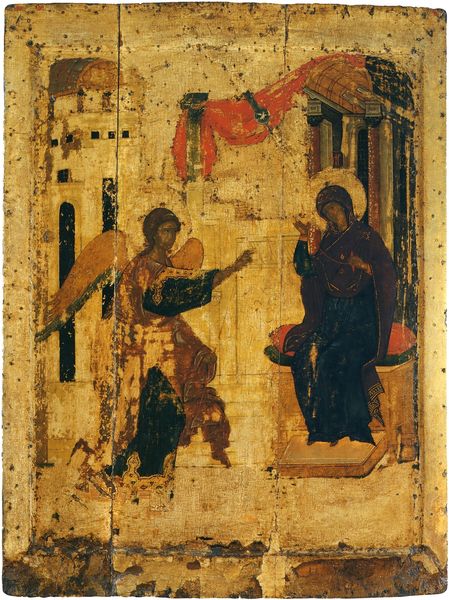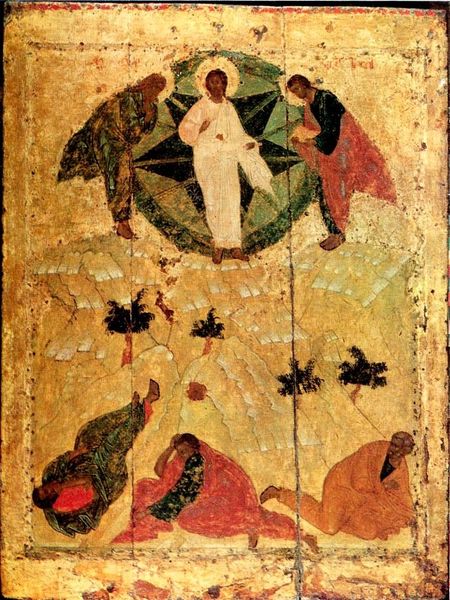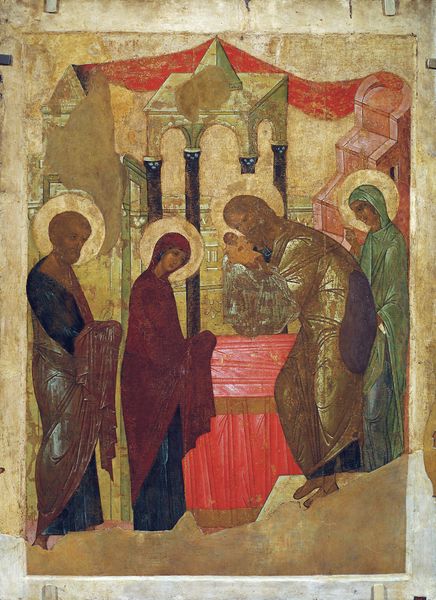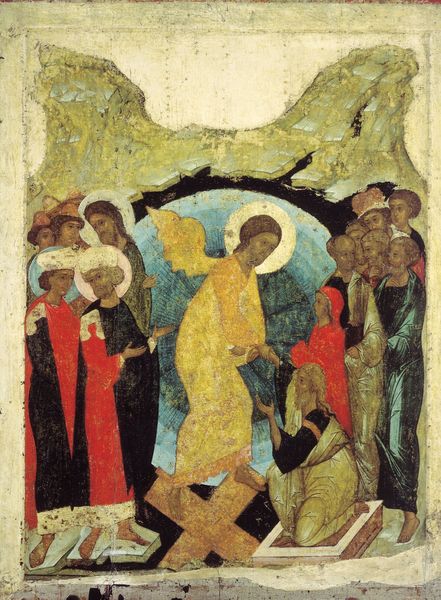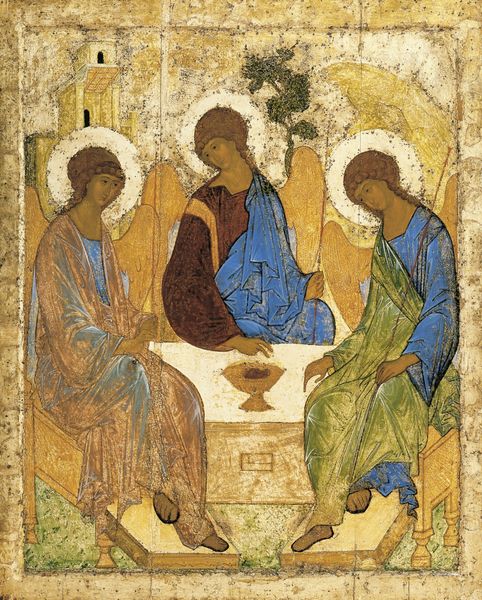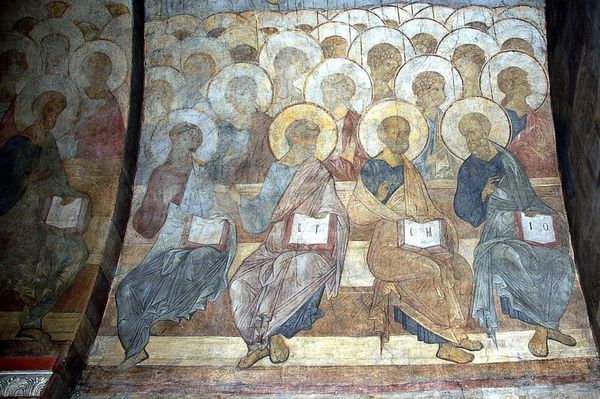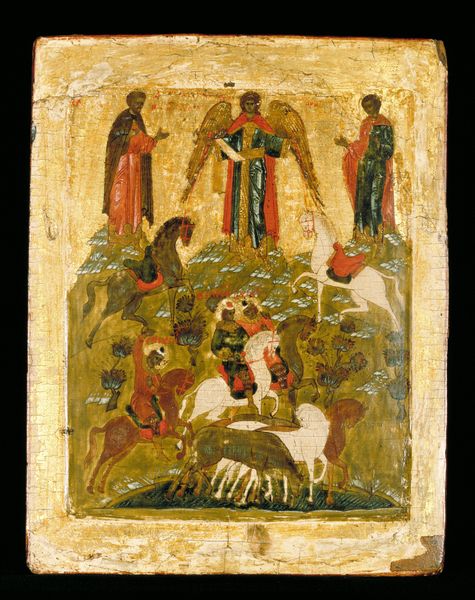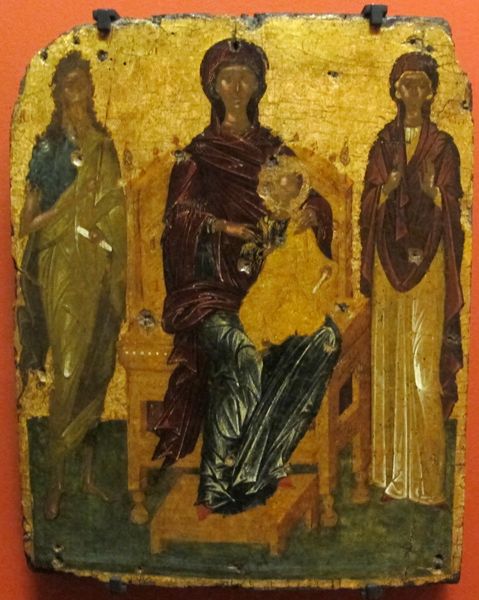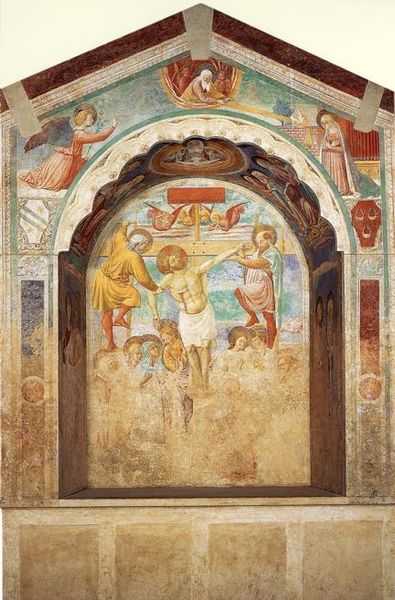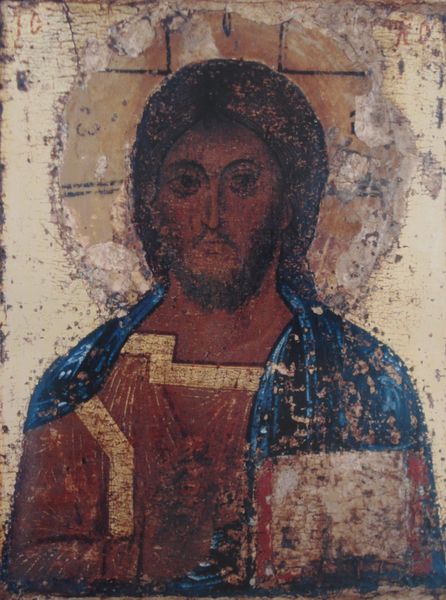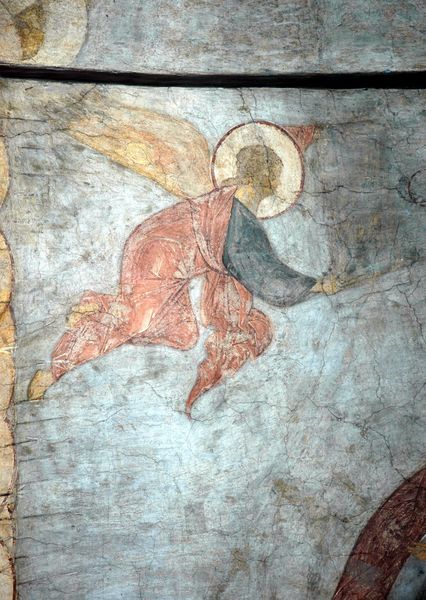
Baptism of Christ 1405
0:00
0:00
andreirublev
Cathedral of the Annunciation (Moscow Kremlin), Moscow, Russia
tempera, painting
#
byzantine-art
#
medieval
#
tempera
#
painting
#
figuration
#
oil painting
#
christianity
#
history-painting
#
mixed media
Dimensions: 81 x 62 cm
Copyright: Public domain
Curator: The solemn scene before us depicts the "Baptism of Christ," a tempera painting created around 1405 by Andrei Rublev, part of the Annunciation Cathedral’s collection here in the Moscow Kremlin. Editor: It’s… surprisingly earthy. I mean that both in color and, well, materiality. I wasn’t expecting such grounded tones; that aged surface just speaks of process, doesn't it? Look at the craquelure! It gives it this fantastic, tactile quality that clashes almost beautifully with the spiritual theme. Curator: Precisely. And notice the almost geometric abstraction of the figures – that’s very characteristic of the Byzantine style, though here Rublev infuses it with a newfound grace. John's hand blessing Jesus, for instance, carries immense weight, both literally and symbolically. The holy spirit descends here… a visual metonym for transformation. Editor: Speaking of symbolism, look how minimal everything is. It emphasizes the ritual, but the application itself seems so considered. We’re looking at tempera, of course; egg yolk, ground pigments… labor-intensive work for the artists, grinding and mixing pigments that came from all corners of the world. Think about that dedication involved in making the ultramarine, the lapis lazuli ground into that perfect deep blue, into something divine. Curator: Right, this blue symbolizing holiness or divine grace is also associated with the veil of Mary. Also think about what Baptism represents. Cleansing. Renewal. To be submerged then to re-emerge pure. Rublev presents not simply the historical moment, but rather its eternal, archetypal essence. These aren't portraits, but paradigms. Editor: And yet, there is the real labor—the social reality, if you will. Who prepared this panel, likely lime wood, before the gesso was even laid down? How many hands were involved, and what would their own understanding of "renewal" or purity mean within their daily lives? It’s easy to get lost in spiritual ideas without thinking about the sheer effort involved in art like this. Curator: A valid point. Ultimately, it's an intersection. An attempt to convey intangible truths with incredibly tangible means. I always find that juxtaposition fascinating here. Editor: It’s powerful indeed when considering how that initial earthy impression quickly transcends into something almost ethereally symbolic. The intersection of the material and the spiritual is the very definition of faith, and it's there in the materiality itself.
Comments
No comments
Be the first to comment and join the conversation on the ultimate creative platform.
